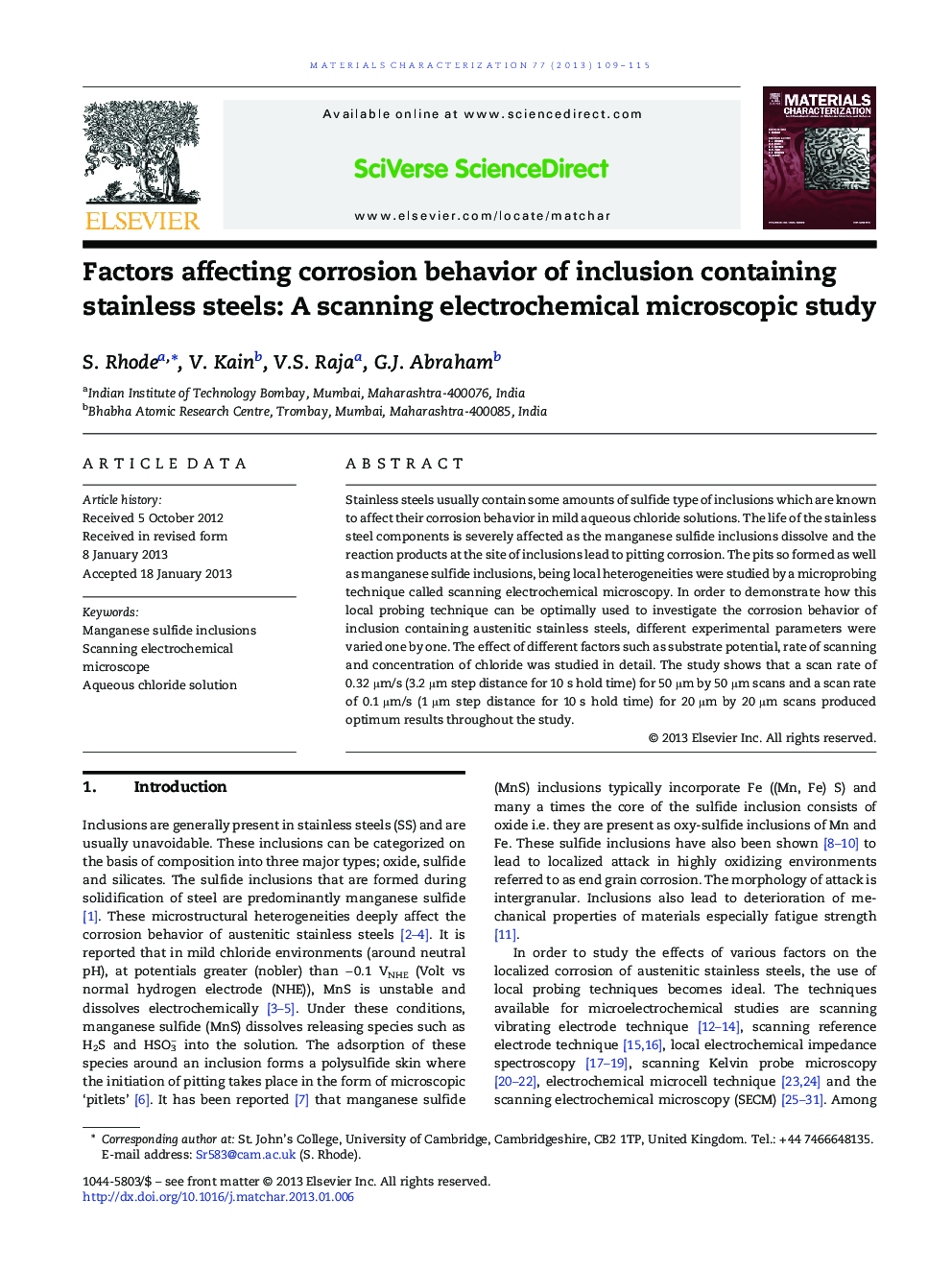| Article ID | Journal | Published Year | Pages | File Type |
|---|---|---|---|---|
| 1571244 | Materials Characterization | 2013 | 7 Pages |
Stainless steels usually contain some amounts of sulfide type of inclusions which are known to affect their corrosion behavior in mild aqueous chloride solutions. The life of the stainless steel components is severely affected as the manganese sulfide inclusions dissolve and the reaction products at the site of inclusions lead to pitting corrosion. The pits so formed as well as manganese sulfide inclusions, being local heterogeneities were studied by a microprobing technique called scanning electrochemical microscopy. In order to demonstrate how this local probing technique can be optimally used to investigate the corrosion behavior of inclusion containing austenitic stainless steels, different experimental parameters were varied one by one. The effect of different factors such as substrate potential, rate of scanning and concentration of chloride was studied in detail. The study shows that a scan rate of 0.32 μm/s (3.2 μm step distance for 10 s hold time) for 50 μm by 50 μm scans and a scan rate of 0.1 μm/s (1 μm step distance for 10 s hold time) for 20 μm by 20 μm scans produced optimum results throughout the study.
► MnS inclusions were studied by scanning electrochemical microscopy (SECM). ► We studied inclusions in austenitic stainless steels by varying different factors. ► Scan rate of 0.1 μm/s is ideal for 20 × 20 μm scans. ► Scan rate of 0.32 μm/s is ideal for 50 × 50 μm scans. ► Lower potentials and mild environments lead to lower initiation and growth of pitting.
